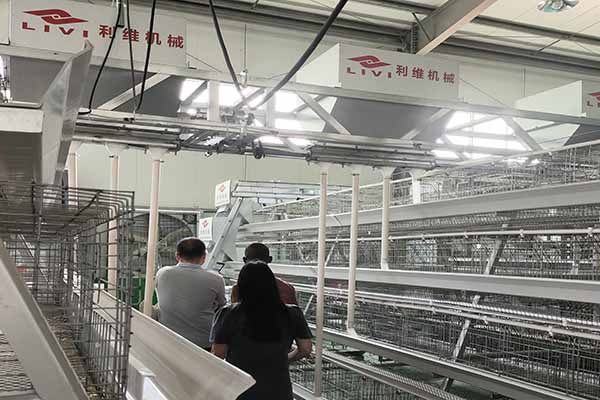Tanzania Chicken Farms Embrace Automation Equipment: The Benefits and Impact
Time : 2025-06-25
In the dynamic and ever-evolving world of agriculture, Tanzania’s poultry industry has been witnessing a significant transformation. The adoption of automation equipment in chicken farms has become a cornerstone of modern poultry production. This article delves into the benefits of using automation equipment in Tanzania’s chicken farms and its long-term impact on the industry.
Introduction to Automation in Chicken Farms
Automation refers to the use of technology to handle tasks that were traditionally performed by humans. In the context of chicken farming, automation involves the use of machinery and software to manage various aspects of the farming process. This includes feeding, watering, monitoring health, and even egg collection.
The Rise of Automation in Tanzania’s Chicken Farms
The poultry industry in Tanzania has been growing at a rapid pace, driven by increasing demand for chicken meat and eggs. As a result, farmers have been looking for ways to improve efficiency and productivity. Automation has emerged as a key solution, offering numerous benefits that traditional methods cannot match.
Benefits of Automation Equipment in Tanzania’s Chicken Farms
1. Increased Productivity: Automation allows farms to handle larger flocks with fewer laborers. This leads to increased productivity and reduced labor costs.
2. Enhanced Biosecurity: Automation minimizes the need for human contact with chickens, thereby reducing the risk of disease outbreaks.
3. Improved Quality of Feed: Automated feeders ensure that chickens receive the right amount of feed at the right time, leading to better growth rates and overall health.
4. Better Egg Collection: Automated egg collection systems improve the efficiency of the process, reducing the risk of egg breakage and damage.
5. Real-time Monitoring: Automation equipment allows farmers to monitor the health and well-being of their chickens in real-time, enabling timely interventions and treatment.
6. Reduced Labor Costs: By automating various tasks, farms can reduce their reliance on manual labor, leading to significant savings in labor costs.
7. Energy Efficiency: Automated systems are designed to optimize energy usage, reducing the overall energy consumption of the farm.
The Impact of Automation on Tanzania’s Chicken Farms
The adoption of automation equipment in Tanzania’s chicken farms has had a profound impact on the industry. Here are some of the key areas where this impact has been observed:
1. Improved Farming Practices
Automation has prompted farmers to adopt more modern and efficient farming practices. This includes the use of advanced breeding techniques, better nutrition, and improved biosecurity measures.
2. Increased Output
With automation, chicken farms in Tanzania have been able to increase their output significantly. This has led to a surplus of chicken meat and eggs, making Tanzania a net exporter of poultry products.
3. Job Creation
While automation has reduced the need for manual labor, it has also created new job opportunities in the form of maintenance, operation, and management of the automated systems.
4. Enhanced Market Competitiveness
The adoption of automation has made Tanzania’s chicken farms more competitive in the global market. This is due to the increased efficiency, reduced costs, and improved quality of products.
Challenges and Future Prospects
Despite the numerous benefits of automation, there are challenges that need to be addressed. These include the high initial cost of automation equipment, the need for skilled labor to operate and maintain the systems, and the potential loss of jobs in the short term.
However, the future prospects for automation in Tanzania’s chicken farms are promising. As technology advances and costs decrease, more farms are expected to adopt automation, leading to further improvements in productivity and efficiency.
Conclusion
The use of automation equipment in Tanzania’s chicken farms has brought about significant benefits and has become a vital component of modern poultry production. As the industry continues to grow, the adoption of automation is expected to increase, leading to even greater efficiency, productivity, and profitability.












